When it comes to community planning and growth, we here on the North Coast are a wary lot. Go to any planning commission meeting and you're almost guaranteed to hear someone fret about preserving our county's unique character and quality of life. In fact, that very phrase appears as a guiding principle in the current draft of our county general plan. We've got it good up here, and we'd like things to stay more or less how they are, thankyouverymuch. In an increasingly homogenized America, we defiantly pedal our kooky, kinetic civic processes against the prevailing winds. Wheee!
But, like it or not, we must allow for growth. State law mandates that every governing body -- be it a city council or a county board of supervisors -- develop a long-term, comprehensive plan to accommodate projected housing needs. Our projected needs from 2007 through 2014 call for 4,747 new housing units county-wide, according to The Humboldt County Association of Governments (HCAOG). And not just for SoCal retirees erecting mansions on Fickle Hill, or neo-utopianists seeking solar-powered co-housing on the bay. No, we have to provide homes on all levels of the economic ladder. "Make room!" our government masters command. And in typical contrarian fashion, we respond like a Co-op-shopping Clint Eastwood: "We'll grow," it says in Arcata's General Plan 2020, "but on our own terms."
Both the city and the county are on the verge of adopting updates to the housing elements of their general plans. But the guiding philosophies of growth on the North Coast have remained relatively unchanged for years now: Promote infill, not sprawl. Build responsibly, protecting natural resources and preserving open spaces. Make sure the new homes jibe with community characteristics.
In the abstract, there's broad, if not complete, agreement on these principles. In practice, however, that consensus tends to fall apart, especially among the immediate neighbors of proposed developments. When analyzing a specific project it becomes imperative to define your terms and consider implications. What exactly qualifies as infill? Or sprawl? Where do you put housing if not open space? (Atop stores is the latest trend.) And how do you build anything without at least subtly changing a community?
Creek Side Homes, a proposed development at the edge of Arcata, has raised these and other questions. The developers, Danco Development, see the project as the very definition of what Arcata officials asked them to provide. Neighbors, on the other hand, call it sprawl and worry that it would prompt encroachment on the Arcata Bottoms' agricultural land.
City staff and council originally encouraged the project, prompting Danco to spend close to a million dollars on studies, reports and staff time. But in June a new city council voted unanimously to deny for now at least annexation that would have made the project possible. The Planning Commission also unanimously shot the project down last year, citing concerns over protecting the neighboring agricultural land, the projected cost to the city and the timing of the project.
Now, the developers feel let down by Arcata's "godfathers," as Danco owner Dan Johnson calls the city's decision-making bodies. Those "godfathers" counter that Danco hasn't adequately incorporated the city's recommendations. When word got out that Danco was considering taking the annexation decision directly to the Local Agency Formation Commission, or LAFCo (the state agency that has exclusive authority on annexation decisions), the debate reached a fever pitch.
There's more to community growth than just establishing a vision. As local governments put the finishing touches on our blueprints for the next five to 20 years, it's the process of manifesting that vision that's come under greater scrutiny.
The 17-acre field north of Foster Avenue at Q Street in Arcata looks like pastureland from afar, but walk on it and you'll find pitted concrete slabs and crumpled, rusted metal -- industrial remnants of the Eel River Sawmill that once stood here. A huge cement ramp, relic of a truck-loading dock, is now painted with graffiti and covered with a layer of jagged beer bottle shards. People who live nearby walk their dogs and bicycles across the gravel and grass surface, skirting the Dumpster, the debris and the abandoned tractor tire filled with soggy clothes and old 12-pack boxes. Homeless people sometimes sleep here -- people like Kirby, a bearded Atlanta native who showed up one evening last week with Snoopy, his Shepard cross, and a 40-ounce beer, hoping to numb the pain of a tooth he'd just had extracted.
This is the proposed site for Creek Side Homes, which, according to tentative plans presented to the city, would be a 151-unit neighborhood with numerous eco-groovy amenities: a 3.5-acre wetland corridor along Janes Creek, a mile-long bike trail, low-income co-housing and an agricultural easement that would allow community farming on the adjacent 27 acre parcel. The plot is within the existing urban services boundary, near a main transportation corridor and less than a half-mile walk from the Plaza.
It does, however, lie just outside city limits, and here's where things get complicated. In order for the city to consider the project, it would first have to approve annexation of the parcel where it would be built. Separating the two issues has proved impossible.
"Even though we were just considering annexation, it was complicated by the fact that the project would be going there," Arcata Councilman Shane Brinton told the Journal last week. That fuzzy line was made fuzzier during the public comment period at the June 3 City Council meeting, when Creek Side Homes came under fire. Ethan Knox, an Arcata carpenter, said the project was in discord with Arcata's "proud old houses." Keith Neil said it would create a "conga-line" of traffic on Foster Ave. Alan Sanborn complained that "Arcatans are not churning out a lot of new people, yet we seem to have to provide for everybody else's new people." He suggested family planning over Creek Side planning. Lisa Brown, a longtime opponent of annexation, said the environmental impact report failed to adequately address traffic concerns or ensure protections for neighboring ag lands.
"I really don't care what the plan is," said one resident. "We just don't need any more of this kind of development. ... This is a town with real people who happen to love it."
The property is explicitly identified in both Arcata's General Plan 2020 and the current housing element as a site slated for future growth, but the council had reservations. Was this technically infill? Was the EIR adequate? What about the traffic impacts? This was in June, before California had passed a budget and the nation's economy had pulled out of its nosedive. Councilwoman Susan Ornelas questioned the wisdom of approving growth in such an atmosphere.
"Annexation is a very complicated, protracted process...," Councilman Mark Wheetley said. "There are a lot of pieces to this." They looked to staff for guidance.
"It's our opinion that this project is consistent with the general plan," said Public Works Director Larry Oetker. But he presented an option besides outright acceptance or denial -- do nothing. That is, take no action on the annexation proposal and instead ask Danco to resubmit its request a year later. The council voted unanimously to take no action.
Standing on the southwest corner of the property in question last Thursday, Danco Project Manager Sean Armstrong, Site Acquisition Director Lindsey Myers and CEO/President Dan Johnson reflected on that decision. Johnson, a blunt, assiduous man who looks younger than his 45 years, said he found the experience frustrating, to say the least.
"'Frustration' would be a minor way to put it," he said. Specifically, he's annoyed that city staff did not seem to be in alignment with the Planning Commission and City Council. "They lead you down a path, and you make big financial commitments around that, and at the end of the day there's this complete disconnection," Johnson said. "There's obviously something wrong, something not working, whether it's the NIMBYs or our ability to present the project."
Armstrong, who developed and presented the project and who lives with his family directly across the street, was more focused in his criticism. The council, he said, simply didn't understand the environmental or fiscal impact reports, and they allowed themselves to be swayed by irrelevant community complaints -- complaints, he said, that amounted to little more than fear, hyperbole and uninformed skepticism.
"The City of Arcata considers it their job to represent the immediate neighbors [when] their charge is to represent the general plan," Armstrong said.
Whether the Creek Side Homes plan does comply with the general plan is subject to debate. Arcata resident Lisa Brown believes it does not. "They have to meet certain criteria, and I don't feel they achieved that," she told the Journal in a phone conversation last week. "There were a lot of things that people have asked for that haven't been satisfied."
She and other residents feel that the city's western boundary should be defined by Janes Creek, currently the dividing line in that portion of the city. And while the Creek Side Homes site is an industrial-zoned brownfield, Brown worries that one development will inevitably lead to another, and another, encroaching with each step on the sensitive and valuable ag lands in the Arcata Bottoms.
"I think the City Council did a good job in their decision, and the Planning Commission did a good job -- everybody's doing their job," Brown said. "Annexation is a big responsibility. It's not just a piece of candy that gets handed over to developers. They [Danco] have to appease what people are saying."
Carol McFarland and her husband, Don, live in one of two farmhouses across Foster Ave. south of the property in question. (Armstrong's family occupies the other.) She has been one of the most outspoken opponents of annexation, writing letters to local papers and speaking at public meetings. The projected traffic impact is perhaps her primary concern. The EIR estimates the development would add 1,500 car trips per day on Foster Ave., an amount deemed "not significant" in the report but very significant in McFarland's view.
"The only feasible access point that plans show is off Foster Ave.," she said. "That's a farm road. They can't create a freeway out here."
Brinton insists that the primary factor in his decision was, in fact, fidelity to the general plan, specifically the criterion that says annexed land must "have a positive or neutral fiscal impact, or other overriding public benefits," though he said the traffic concerns were also an issue.
"It's not fiscally neutral," Armstrong said. "They're right. But their understanding stopped right there. They put their fingers in their ears." Thanks to Prop. 13, California's 1978 initiative limiting property taxes, all residential housing costs the public more than it produces, Armstrong said. To make it fiscally neutral, Danco proposed an assessment district, charging residents an additional tax payable to both the county and city. The proposal was laid out in the fiscal impact report, but the council remained unconvinced, which drove Armstrong up the wall.
"This is the kind of thing that makes a mature, intelligent person want to cry," he said last week. The council, he said, is only allowed to consider expert testimony, per guidelines set forth by CEQA, the California Environmental Quality Act. "You're not supposed to include people's fears," Armstrong said. "You can't do a gut check and vote 'no.'"
Johnson agreed. "To stand up and say, 'Traffic is a problem' -- OK, well, ground that assessment," he said, "because we've grounded it."
Brinton admitted that he may not have understood all the intricacies involved. "Council members aren't experts on this stuff," he said. "We depend on staff to inform us, and when staff voices even a little bit of concern, we pick up on that." When Oetker, the public works director, presented the option to take no action on the matter, Brinton interpreted it as hedging. "Staff were supporting [annexation] but they seemed a little bit lukewarm," Brinton said.
Oetker, for his part, said the councilmembers had other issues on their minds. "Something that should not be underestimated [is that] when this came before the council, the state was in a budget crisis," he said. "We didn't know how much they were gonna steal from local governments, and the council was very conservative. They didn't want to approve any project that may end up being a huge burden on taxpayers. In my opinion, that's one of the primary reasons they said, 'Don't do anything for a year.'"
The argument has been heated, yet Johnson insists he doesn't want to go against the community's wishes. "It is by no means our intent to shove a project down somebody's throat," he said. "That's one of the things that makes us different as developers is we do listen to the community. I'll listen to Carol McFarland if [her stance] is something other than just flat 'no project.' ... I don't want to fight," he said. "That's not why we're in business."
Talk of peace and understanding aside, Johnson said he has not ruled out appealing directly to LAFCo for annexation, with or without the city's cooperation. City Council members have said they will actively and publicly oppose such a move.
Are there lessons to be learned from the Creek Side Homes saga? And if so, for whom?
Elizabeth Conner has been a part of the story from the get-go. As a member of the General Plan 2020 task force, then the Planning Commission, then the City Council, she's had her eye on the former Eel River Sawmill site for years. "I was on the Planning Commission that fought for that land being included for annexation," she said. "For me, it's a perfectly defined infill sight." She believes there are a couple things developers should take away from this experience.
"I don't think [Danco Development] did a good job of presenting their case," Conner said. "Their style was sort of, 'It's fiscally neutral, don't you get it?'" Instead, she thinks they should have focused on the "overwhelming benefit" approach. And she cautioned other developers against taking away the wrong message -- that the city claims to be for infill projects but will deny them when actually presented with one.
"This was a particular case," she said. "I think the city is willing to look at annexations brought forward in a competent manner." But she also believes city leaders should do more research. "I just wish the Council had had more information." Decision making in such scenarios, she said, should be "an orderly process based on facts."
Local developer Joyce Plath, who designed the Marsh Commons Co-housing project and the Stillman Buildings on the northeast corner of the Arcata Plaza, and who has worked with Danco in the past, said there should be safeguards to reduce the chances that companies will invest hundreds of thousands of dollars before knowing whether the city will accept their proposal. She also thinks the city should show more backbone in the face of community complaints. "The City Council needs to stand up sometimes and say, 'Sorry, you guys, we think the community needs this,'" Plath said.
And what about the community itself? Should we be less wary of growth? "The current thinking [in planning circles] is if you're not growing, you're shrinking," said Michael Richardson, a senior planner with the county. "People like the things that continued economic growth brings. It allows us to improve parks, build new parks, provide more services, replace equipment and give new technology to our firefighting and police departments."
The recently adopted housing element of the county's general plan update calls for more infill as well as more housing for people in the low and very-low income brackets. During the last planning period -- 2001 through 2007, a period that encompassed the housing bubble -- production exceeded projected growth in Humboldt County by 260 units. But this was achieved by building 124 extra homes in the moderate-income level and 571 more than the target in the above-moderate category while falling short in the low and very-low categories by more than 400 units. Those are the ones neighbors tend not to want, and they're typically also the ones developers don't care to build since there's not much market for them. The net effect has been dismal affordability numbers. In Humboldt County, only one in five families can afford a median-priced home compared to 53 percent statewide and 64 percent nationally. In Arcata, only 16 percent of residents could afford an average home.
Local jurisdiction are trying to counter this trend with policies like inclusionary zoning, which requires developers to build a certain percentage of low and very-low income housing in all new developments. But providing homes for those who cannot currently afford them doesn't necessarily require us to lower our community standards or simply step aside for developers. On the contrary, our wariness may be needed more now than ever.
"I've found that the process of going to various committees can in the end produce a better project," Plath said. Community critiques, if well-informed, can provide a counterbalance to developer's ambitions, creating our own system of checks and balances. "Overall, I've found that the process ends up with better planning than I would have ended up with myself," Plath said. "I think it works most of time."
Is it working for Creek Side Homes? Arcata Councilman Michael Winkler said he thinks a lot of Danco's frustration is valid. On the advice of City Attorney Nancy Diamond, Winkler recused himself from the council's deliberations in June. He had been part of the Planning Commission that recommended denying annexation last year, and he didn't want to create the impression of prejudice.
Ironically, Winkler said that his experience on the Planning Commission would have made him, if anything, more amenable to Danco's proposal. "I think that if I had been on the council [during the deliberations] I would have been more willing to consider this project," he said. Winkler agrees with Armstrong that the decision should have been based on facts, not opinions. The general plan represents a community vision that was crafted carefully and openly over a long period of time, he said. "To be fair to developers we have to follow that plan. ... If the developers are following the rules by dealing with and fully addressing the objections raised by the Planning Commission, then the City Council would have to approve it," Winkler said.
Did the rest of the council analyze the proposal that way? "Not to the degree that I would have liked," Winkler said. The council, he said, shouldn't be swayed by short-term pressure. "You do need to be sensitive to people, but you also need to follow the rules."
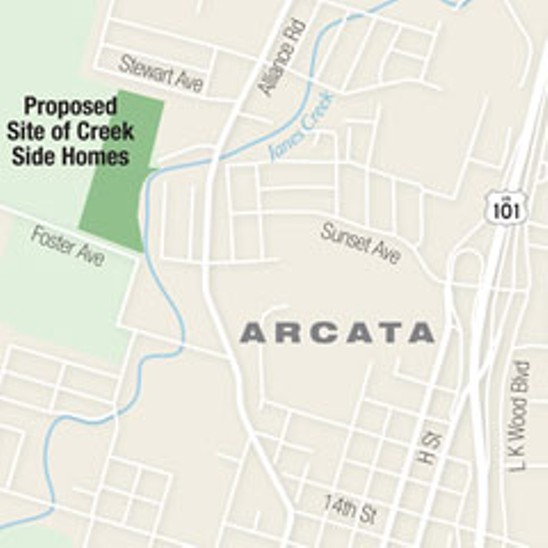
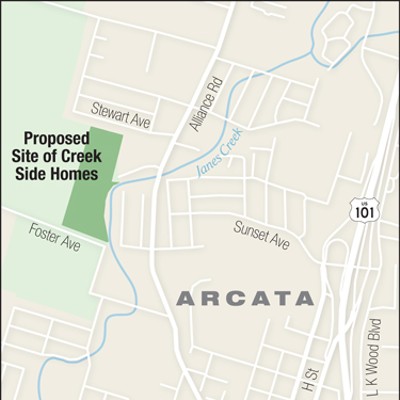

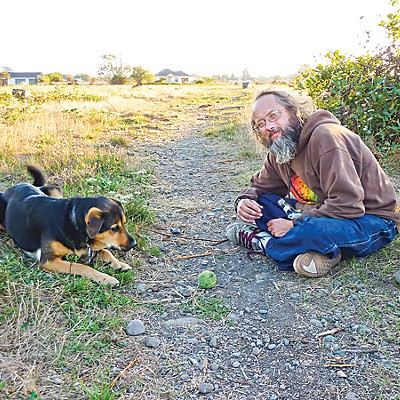
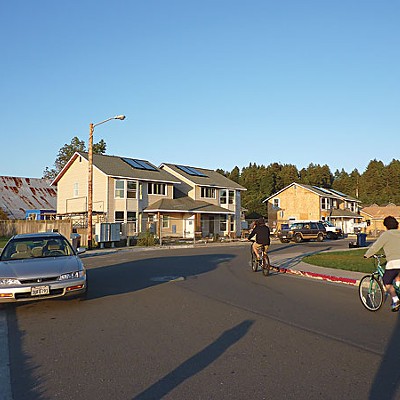
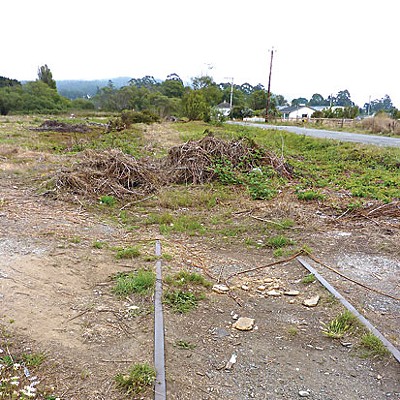


Comments (2)
Showing 1-2 of 2